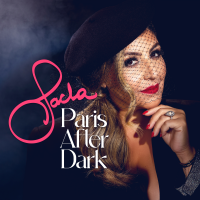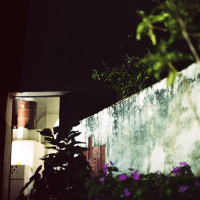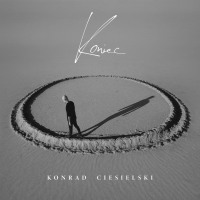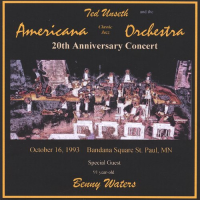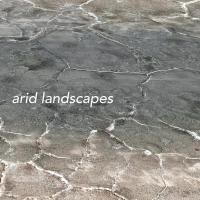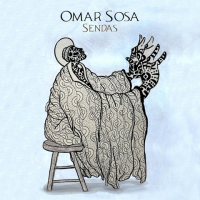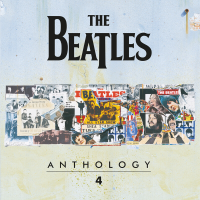Home » Jazz Articles » Multiple Reviews » Verve's Free America Series, Part 1-3
Verve's Free America Series, Part 1-3
France was a hotbed of free jazz activity during the late 1960s and early 1970s. A fraternity of expatriate American musicians solidified their reputations in the music through visits both abbreviated and protracted to the continent. One, soprano saxophonist Steve Lacy, would extend his stay for the better part of thirty years. Fortunately recording labels surfaced to document and disseminate the sounds. Among them the America and BYG imprints would prove the most prolific and representative of the still burgeoning free jazz idiom, a porously-bordered ethnomusical art form that encompassed not only jazz elements, but cultural borrowings from Africa, Asia and the Middle East. The fire breathing tropes of the post-Coltrane and Ayler schools held largely intact in these new Euro-American off-shoots, but they were bolstered by an even greater consciousness of global events and relativistic worldview.
America started its operations as a European distribution conduit for jazz reissues under the stateside ownership of the Fantasy label. Couched within this larger umbrella, the Free America series focused on albums by individuals and ensembles who have since become pillars on the freer side of the jazz spectrum. Emblematic names like Anthony Braxton, the Art Ensemble of Chicago, Archie Shepp and Frank Wright joined others like Clifford Thornton and Alan Shorter who weathered the vagaries of time with less success. Pressed in modest quantities the platters quickly became highly-coveted collectors' items and the province of listeners with both the luck and/or cash to procure them.
Much to the euphoric consternation of many free jazz fans, Universal-Verve decided to repress the majority of the Free America catalog as deluxe reissue editions. When a boon of such magnitude drops from the skies an urge to scrutinize the gift with a skeptical eye also tends to evanesce with it. Remarkably, Universal leaves little room to complain or cavil. The fifteen chosen titles (out of a total catalog of twenty-five) received an unprecedented degree of respect and care. All are packaged in beautifully designed gatefold digipaks, adorned with a series of collage-style cover paintings by Frenchman Jerome Witz. Discs are housed in paper sleeves adorned with Xerox facsimiles of the original album covers. Individual booklets contain newly penned essays by Philippe Carles, Chief Editor of Jazz Magazine, similar stylized graphics and photos, original liner notes from the LPs and studiously researched discographical annotations. The albums themselves, many recorded under less than ideal circumstances, earn state-of-the art remastering and audio cleansing to the point where the results are often revelatory. Because of the industrious girth of the series this survey divides into three installments, each one elaborating on five titles.
 Art Ensemble of Chicago
Art Ensemble of Chicago
Certain Blacks
Verve/Free America
2005
A trilogy of interwoven albums by the Art Ensemble of Chicago launches the series. On Certain Blacks the core four of Roscoe Mitchell, Joseph Jarman, Lester Bowie and Malachi Favors enlist two guests to aid them in the LP-sized journey into deep blues forms: Chicago Beau on tenor, piano and harmonica and Julio Finn blowing second mouth harp. Drummer Don Moye wasn't yet with the band. His precursor William Howell favors a somewhat more rhythmically orthodox approach to the kit and a propensity for hard- boiled beats. Assuming the moniker Edward, Jr., Mitchell focuses his attention on the mighty bass sax. His corpulent lines blast and etch away at the Studio Decca rafters pouring forth with pathos-rich potency. Built on a simple vocal mantra and gospelized riff, the side-long title cut stretches far and wide and posits no shortage of righteous ebullience. The horns cavort and swirl around a rhythmic center eventually dispersing into solos cropped by boisterous shouts and unison returns to the staple aphorism. Jarman's switch to vibes leavens some of the momentum, but the six lock back on the groove thanks to Favors stout ostinato. A snippet of telling banter at the close betrays some surprising dissention at odds with the professed unity behind the piece. Side B divides in two with another Beau composition "One for Jarman and a rollicking cover of Sonny Boy Williamson's "Bye Bye Baby that revels in the syncopation-suffused ambience of a South Side rent party, heavy on the funk. The former tune features the Beau's ivories dancing in line with a lush contingent of horns, plumb bob bass and drums through a tropical-tinged reverie.
 Art Ensemble of Chicago
Art Ensemble of Chicago
Phase One
Verve/Free America
2005
Recorded roughly a year later with Don Moye conscripted to the ranks, Phase One comprises two side-long pieces dedicated to John Coltrane and Albert Ayler, respectively. "Ohnedaruth , the Sanskrit word for compassion, evolves with the Ensemble largely eschewing the majority of its sizeable instrument cache. A solemn invocation of gongs, cymbals and spectral percussion arrives in oceanic swells. Favors' bass plows a path through white-capping waves of cymbals sustaining a bustling pace. The horns take flight on a fanfare head, dispersing into a succession of lengthy and dramatic solos. Jarman's wailing tenor leads the charge, followed by Bowie who, despite a strong start of staccato bursts on trumpet, peters out in his final minutes. Mitchell's ruminative alto is at first calmly at odds with the bustling rhythm behind it, but his prolix improvisation soon foments a persuasive stockpile of steam and heat. "Lebert Aaly is more of a kitchen-sink affair with the five dipping liberally into their individual inventories. Soprano and bass saxophones surface along with clarinets, oboe, flugelhorn, flutes, whistles, vibes and a battery of percussion. Gradual and deliberate horn polyphony spreads and layers atop the clatter of unspecified junk with Favors' hypnotic arco bass as harmonic fulcrum. It takes some sweet time for the diffusive conversation to coalesce, but the entrance of Moye's drums and a colorful meeting between Bowie's muted Milesian brass and Mitchell's subterranean bass sax in the waning minutes brings the track to a place on par with its previous, more conventionally structured counterpart.
 Art Ensemble of Chicago
Art Ensemble of Chicago
With Fontella Bass
Verve/Free America
2005
With Fontella Bass underlines its singularity with its title, alerting to the presence of Bowie's wife as band member. A pop phenom in her own right, Bass found an even more egress for her creative expression in AEoC music. The album breaks down again into a pair of side-sprawling theatrically-oriented pieces. "How Strange/Old Jed traces a centuries old folk lineage, opening with an Afro-Caribbean rhythmic/melodic blend of percussion and vibrant, cyclic chants that wouldn't be out of place in an equatorial open-air market. Soon after, Bass introduces the character/caricature of Old Jed over an ominous backdrop of floating horns, bowed bass and cymbal washes, detailing his sad fate at the bottom of a deep well, her voice straddling the wide gamut from sultry to shrill. Mitchell's lugubrious bass sax teams effectively with Jarman's ethereal vibes in a contrastive pairing around Favors' anchoring bass tether, but the slim song lyric proves substandard in supporting the associative musical weight and the piece meanders. A clamorous coda, incongruous with the earlier ruminative atmospherics, feels gimmicky and tacked on. The album's flipside "Horn Webb fares better, erupting with some ferocious traps play from Moye. Silence bracketed interludes follow and the piece takes on the contemplative cast of a spacious chamber jazz improvisation. Favors' pizzicato bass acts as harmonic stanchion for the introspective horns to circle and thread across. Moye keeps a loose peripatetic time with brushes and shakers while Mitchell's flute lights a luminous way along with the nasal muezzin drone of Jarman's oboe and the metallic flutter of Bowie's trumpet.
 Paul Bley
Paul Bley
Improvisie
Verve/Free America
2005
As one of Paul Bley's earliest forays on analog synthesizers and electric piano Improvisie remains a historically valuable document. Commensurate enjoyment on a musical level will likely hinge on listener opinion of these now-antique amplified implements. The live program pares into two long pieces by the trio of Bley, his then partner vocalist Annette Peacock, also on piano and her own battery of then-newfangled electronics, and finally the unabashedly capricious percussionist Han Bennink. Bley and Peacock were almost completely self-taught on their stacks of consoles. Bley, in particular, possessed an exemplary command of piano techniques. But recognizing the value in a tabula rasa tack to the new technology he tossed out much of his previous training in favor of what he called an "amateur approach. Bennink is a near ideal colleague for this sort of axiom-emancipated approach. The unstable, mercurial nature of his beats and accents acts as ancillary analog to the keyboardists' own real-time experiments. The title track maps a course through vacillating melodic kernels and recurring dissonance. Laced with chattery rhythmic counterpoint the ensuing thickets of interplay resemble the jungle of wires and diodes at their root. Peacock's "Touching, an acoustic ballad in its original form, is even more abstract in design and execution sounding often like a confab of garrulous Star Wars droids. Bley would pull back from this sort of rampant acid testing on future records for Milestone, only hinting and flirting with the freedom herein and adhering far more regularly to established song forms. The impending commercial shift makes this earlier document all the more endearing and noteworthy.
 Anthony Braxton
Anthony Braxton
Donna Lee
Verve/Free America
2005
Anthony Braxton's brief Parisian stay in the summer of '72 yielded two America albums. Donna Lee, the first, showcased a quartet with Braxton fielding five of his instruments in front of piano-led rhythm section. Two standards join two original compositions ("23L and "23K ). The latter pair shares the usual mathematical formula-evocative titles and all carry dedications. "You Go to My Head rendered in two exploratory versions—the first for Dinah Washington and the second for Lee Konitz—finds Braxton at his most loquacious as streams of notes sluice from his alto in expressive founts. He attacks the Bird-associated title cut with equal ardency and aplomb. Wasting nary a moment he shoves decorum aside, abandoning verbatim melodic integrity and instead spilling out a torrent of hard-bitten vibrato-iced phrases. These fervid improvisations hold true to the spirit if not letter of the tune until an inopportune abruptly-edited end. The trio of fellow Americans in his employ responds in kind with roiling responsive support. Pianist Michael Wilson, classically-trained bassist Peter Warren and drummer Oliver Johnson, who along with Wilson would go on to fertile associations with Steve Lacy, make for a fine sympathetic crew. Together they venture out when the circumstances dictate and reel-in when the leader mandates as during the through- composed piece "23K. "23L affords a chance for Braxton to cycle freely through his gallery of instruments, leap-frogging from alto, to flute, to soprano, before finally hoisting the cumbersome contrabass-clarinet and revisiting the order again.
Continue: Part 2
Discuss Verve's Free America Series at the AAJ Bulletin Board.
Tags
PREVIOUS / NEXT
Support All About Jazz
 All About Jazz has been a pillar of jazz since 1995, championing it as an art form and, more importantly, supporting the musicians who make it. Our enduring commitment has made "AAJ" one of the most culturally important websites of its kind, read by hundreds of thousands of fans, musicians and industry figures every month.
All About Jazz has been a pillar of jazz since 1995, championing it as an art form and, more importantly, supporting the musicians who make it. Our enduring commitment has made "AAJ" one of the most culturally important websites of its kind, read by hundreds of thousands of fans, musicians and industry figures every month.












